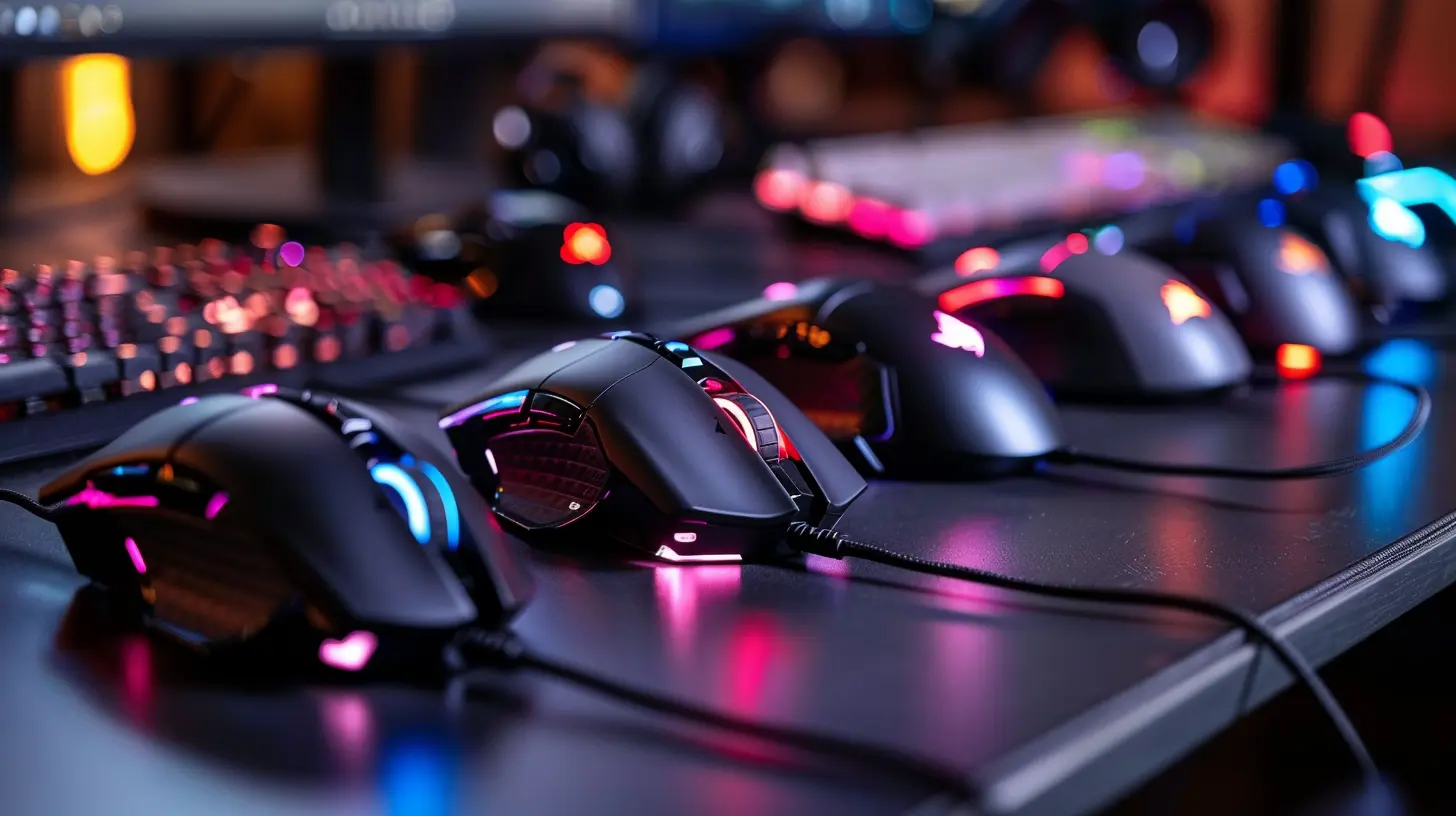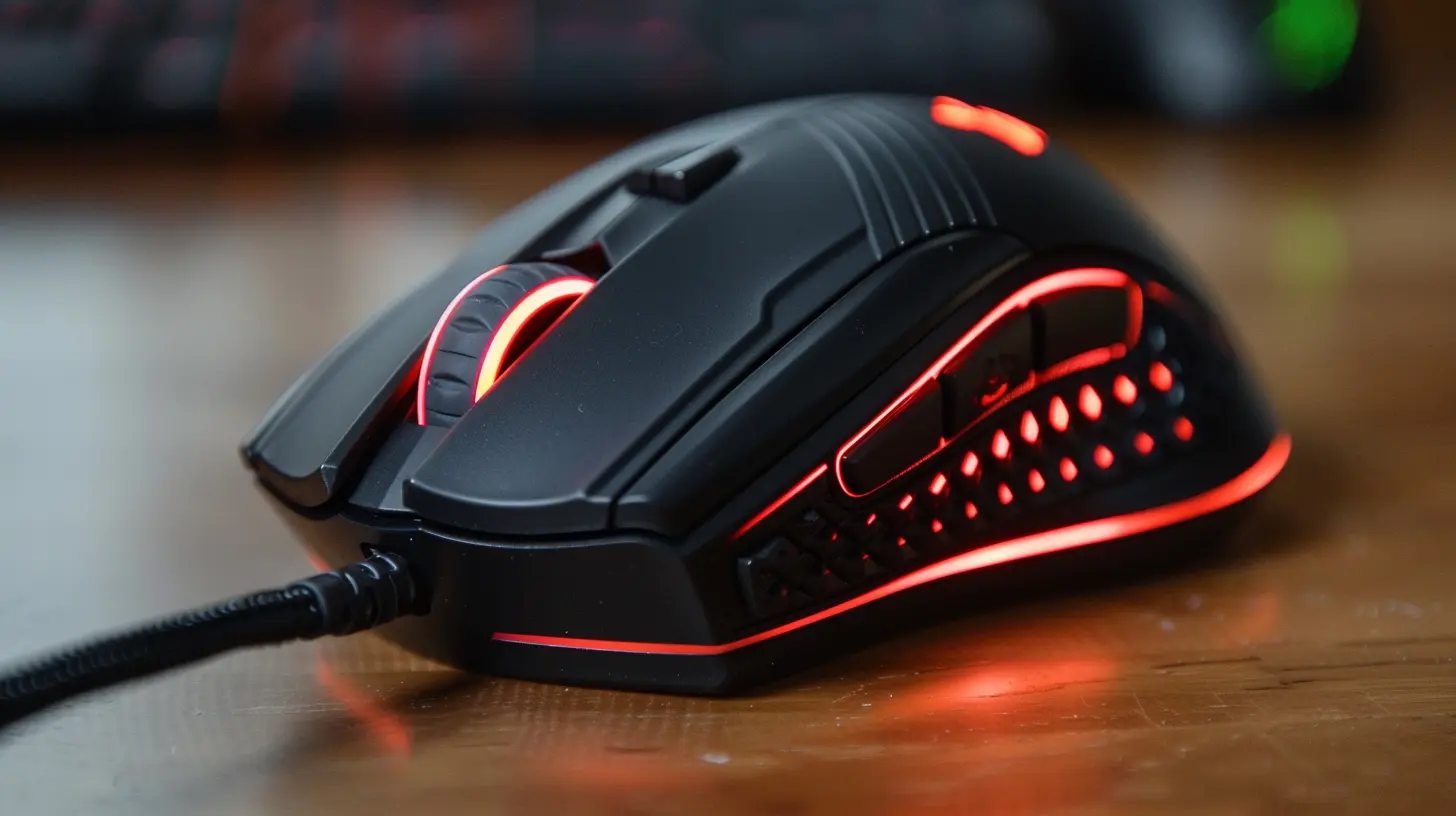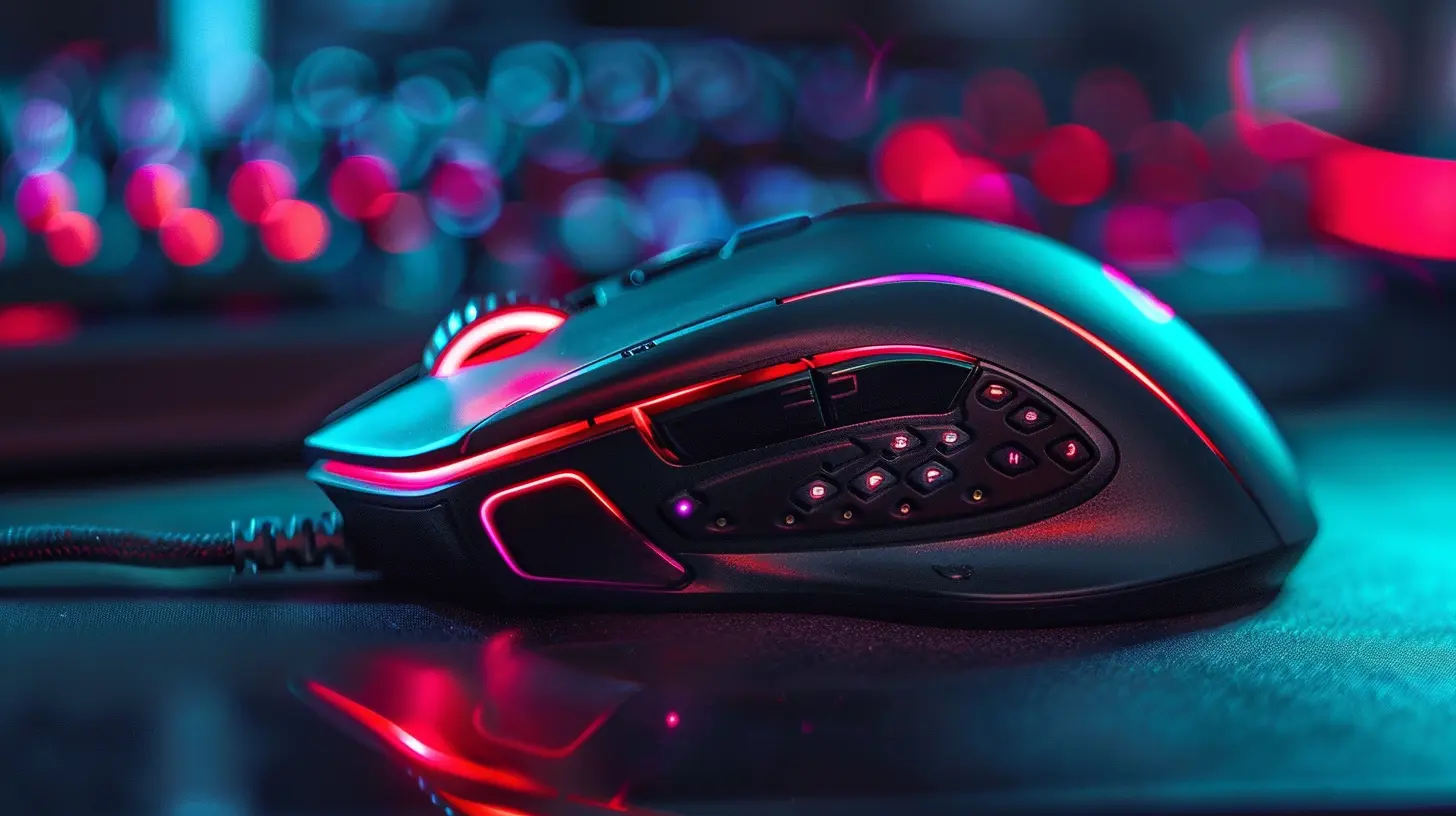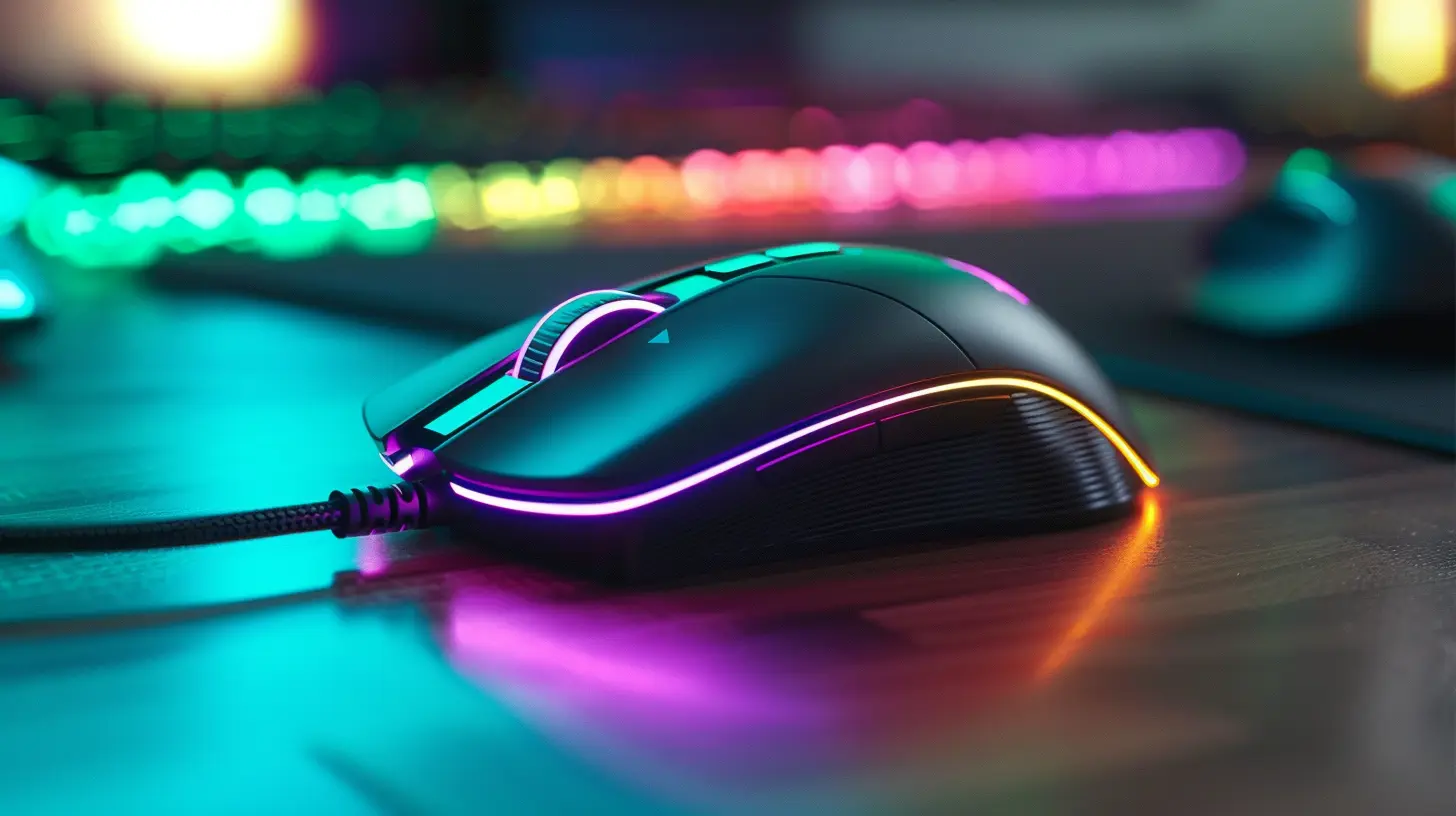The Ultimate Guide to Choosing the Best Gaming Mouse
2 August 2025
So, you're on the hunt for the best gaming mouse, huh? Whether you're deep into FPS headshots, grinding ranked MOBAs, or just casually clicking away in your favorite indie game, your mouse is more than just a tool—it's your weapon. And just like a knight wouldn't go into battle with a flimsy sword, you shouldn't game with a mouse that doesn’t fit your style.
But with hundreds of options out there, how do you even start? Don’t worry—I’ve got your back. This ultimate guide will walk you through everything you need to know about picking the perfect gaming mouse for your setup.
🖱️ Why Your Gaming Mouse Matters
You might think, “A mouse is a mouse, right?” Not quite. Gaming mice are like the sports cars of the tech world—they’re built for speed, precision, and comfort. The split-second delay or an uncomfortable shape might not seem like a big deal now, but when you're in an intense 1v1 or trying to clutch a teamfight, every detail counts.A great gaming mouse can:
- Improve your accuracy
- Boost your reaction time
- Reduce fatigue during long sessions
- Maximize your in-game performance
Yep, it’s a pretty big deal.
🧠 First Things First: Know Your Gaming Style
Before you even open up Amazon or start googling “best gaming mouse 2024”, ask yourself: what kind of games do I play?Different genres have different demands, and what works for an MMO tank might not be the best fit for a CS:GO sharpshooter.
🎯 FPS (First Person Shooter) Games
If you're into games like Call of Duty, Valorant, or Apex Legends, you’ll want a mouse that’s:- Lightweight for quick flicks
- Has a high polling rate (1000Hz is ideal)
- Features a sniper button (for precise aiming)
⚔️ MMO/MOBA Games
Playing World of Warcraft, Dota 2, or League of Legends? These games demand:- Multiple programmable buttons for macros
- A comfortable grip for long gaming hours
- RGB (because why not?)
🎮 General or Casual Gaming
If you enjoy a little bit of everything, then look for:- A balanced mouse (somewhere between speed and comfort)
- Moderate DPI settings
- Reliable build quality
Pro tip: Think of your mouse like a gaming partner. It should match your rhythm and know your moves.
📐 Grip Style: The Secret Sauce No One Talks About
Your grip style might be the most underrated factor when picking a gaming mouse. Seriously, it’s like choosing shoes that match how you walk.There are 3 major grip styles:
🪖 Palm Grip
- Your whole hand rests on the mouse- Best for comfort and long sessions
- Ideal for larger and ergonomic mice
🐱 Claw Grip
- Your palm touches the mouse, but fingers arch inward- Allows quicker movements and better control
- Suited for fast-paced games
🕷️ Fingertip Grip
- Only your fingers touch the mouse- Perfect for lightning-fast flicks and movement
- Best used with lightweight mice
Knowing your grip style is half of the battle. Once you figure this out, you can easily narrow down your options.
🔍 Key Features to Look For
Let’s break down the essentials you should be watching out for when shopping for a gaming mouse. This is where things get juicy.🎛️ DPI & Sensitivity
DPI stands for "dots per inch," and it measures how sensitive your mouse is. Higher DPI = more cursor movement with less hand movement.Most good gaming mice offer a wide range of DPI settings—from 100 to 20,000+. Sounds wild, right?
But here's the truth: more isn't always better. What matters is how consistent and accurate the sensor is at your preferred setting.
Recommended DPI settings:
- FPS Games: 400–800 DPI
- MOBA/MMO Games: 1000-1600 DPI
- 4K Monitors: 1600+ DPI for smooth movement
⚡ Polling Rate
This one's all about speed. The polling rate measures how often your mouse reports its position to your PC.- 125Hz (meh)
- 500Hz (good)
- 1000Hz (ideal)
The higher the polling rate, the smoother and more responsive your aim feels. If you’re competitive, aim for 1000Hz.
🧲 Sensor Type: Optical vs. Laser
Here’s the showdown:- Optical sensors: More accurate, less likely to glitch
- Laser sensors: Work on more surfaces, but can be too sensitive
Gamers usually go with optical for that raw, accurate feel. Just make sure to pair it with a decent mousepad.
🎨 Customizable Buttons
Having extra buttons can be a game-changer (literally). Especially for MMO and MOBA players, customizable buttons let you map complex combos or hotkeys straight to your mouse.Just don’t go overboard—pushing the wrong button mid-fight can ruin your game faster than lag.
💡 RGB Lighting
Okay, RGB won't win you the game—but it looks cool. Whether you're syncing it with your keyboard or just want that drip for your setup, most modern gaming mice offer RGB customization through software.🖐️ Ergonomics: Don’t Ignore Comfort
You're gonna be holding this thing for hours. If your mouse isn’t comfortable, you're asking for wrist pain and hand cramps.Look for:
- Contoured designs based on hand size
- Thumb rests (especially if you’re using palm grip)
- Lightweight build (below 80g if possible)
Also, don’t forget about the cable. Wired mice should have a flexible, drag-free cord. Or go wireless (we’ll talk about that next).
🧵 Wired vs. Wireless: What's Best for Gaming?
This used to be a no-brainer—wired was always the way to go for zero latency. But today? Wireless mice have stepped up their game big time.🔌 Wired Mice
- Pros: Zero lag, no battery worries, lower cost- Cons: Potential cable drag, less tidy setups
📡 Wireless Mice
- Pros: Clean setup, ultra-portable, now super responsive- Cons: Battery life, pricier, occasional disconnects (rare)
Pick what works best for your setup and budget. If you hate clutter or travel a lot, wireless might be your best bet.
🔧 Software and Customization
A good gaming mouse isn't just about hardware. The software it comes with plays a big role too.Look for features like:
- DPI adjustment sliders
- Profile saving for different games
- Macro recording
- RGB lighting control
Brands like Logitech G HUB, Razer Synapse, and SteelSeries GG offer awesome user-friendly software. Just make sure it's compatible with your OS.
😮 Notable Gaming Mouse Brands Worth Checking Out
Let’s name-drop a bit. These brands consistently deliver high-quality, gamer-approved mice.- Logitech – Known for no-nonsense, high-performance mice like the G Pro X Superlight
- Razer – Flashy, fast, and ergonomic (Razer DeathAdder or Viper Ultimate, anyone?)
- SteelSeries – Great balance of performance and aesthetics
- Corsair – Feature-rich with excellent build quality
- Glorious – Lightweight champions (Model O is their MVP)
- Zowie – Pro FPS players swear by it (No-nonsense, driverless designs)
Each of these brands has options across the board from budget-friendly to elite-tier. So no matter your wallet size, you’re covered.
💰 What Should You Spend?
Gaming mice can cost anywhere from $20 to $150+. Here’s a quick breakdown:- Budget ($20-50): Decent for casual gaming and beginners
- Mid-Range ($50-$80): Ideal for most gamers—good build and performance
- Premium ($80-$150): High-end sensors, insane accuracy, and pro-level features
Don’t feel pressured to get the most expensive one. Focus on what fits your style and needs.
📋 Quick Checklist: What to Look For in a Gaming Mouse
Feeling overwhelmed? Here’s a TL;DR checklist to help you out:✅ Know your grip style
✅ Match your mouse to your favorite game type
✅ Aim for adjustable DPI and high polling rate
✅ Choose optical sensors for precision
✅ Check button layout and customizability
✅ Consider ergonomics and weight
✅ Decide on wired vs. wireless
✅ Research software compatibility
✅ Stick with trusted brands
🏁 Final Thoughts
Choosing the best gaming mouse isn’t about buying the most expensive or the flashiest one—it’s about finding that perfect fit. Think of it like finding your soulmate in the form of a clicky little device.So take your time, try different shapes if you can, and prioritize comfort and performance over hype. Because when your gear feels right, your gameplay will follow.
And remember: it's not just a mouse—it's your in-game extension, your crosshair commander, your combo king.
Happy gaming, and may your aim always be true.
all images in this post were generated using AI tools
Category:
Gaming HardwareAuthor:

Lana Johnson
Discussion
rate this article
1 comments
Kairoth Lopez
Choosing the right gaming mouse can elevate your gameplay to new heights! Embrace the journey of discovery, and let your passion for gaming shine with every click!
August 20, 2025 at 3:13 PM

Lana Johnson
Thank you! I'm glad you found the article helpful. Choosing the right gaming mouse can truly enhance the gaming experience! Happy gaming!


